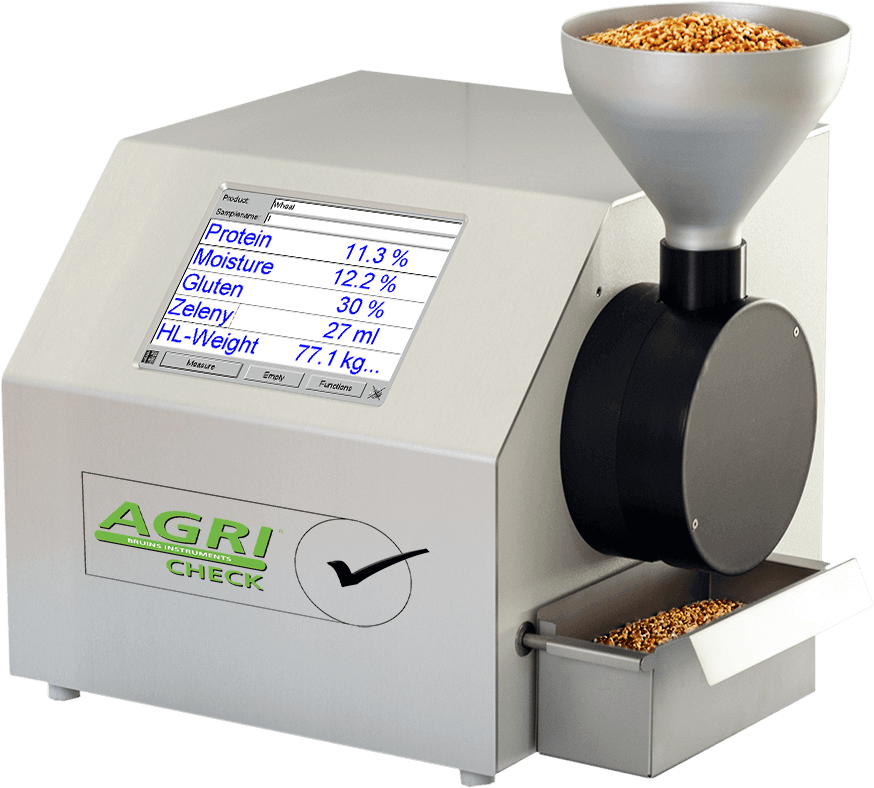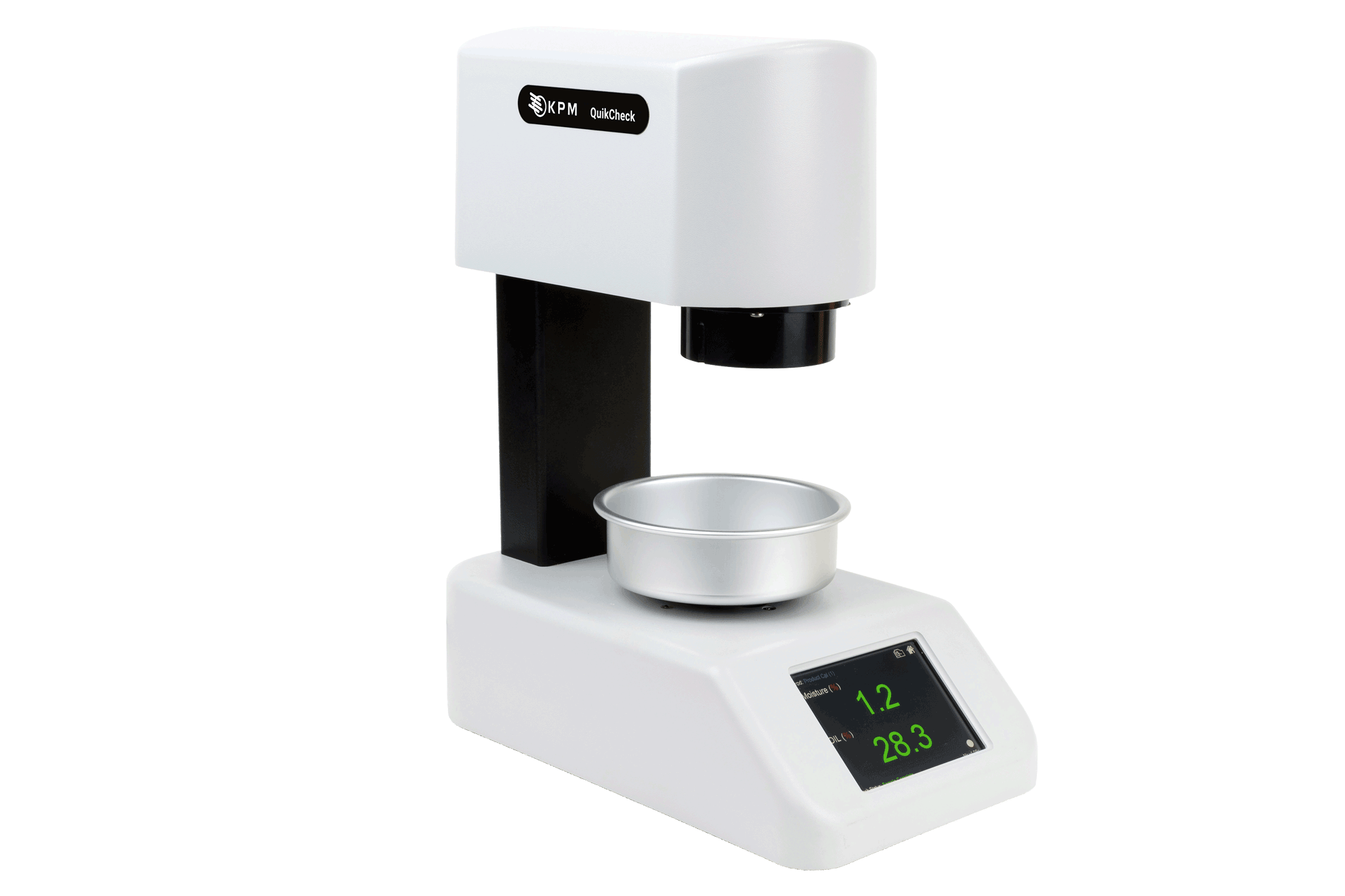Analysis Options for Pizza

Quality Control During Pizza Production
Apart from the recognition of Italian know-how (the Napolitan pizza is listed as a UNESCO World Heritage), there are no strict rules for making a pizza and basically only 2 requirements: a dough base and a choice of ingredients to top it. In the context of industrial pizza production, to avoid trouble, and to guarantee a homogeneous and consistent production, it is important to optimize the process with a set of fast and accurate analysis from the selection of its raw materials to the control of the finished products.

Moisture and Compositional Analysis
Flour is mainly composed of starch, water, protein, sugars, fat & minerals. Depending on the wheat, or other cereals like corn/maize, and the flour obtained, these parameters will be present in different proportions which influence the machinability of the dough and quality of the finished product. The moisture & compositional analyses of flour are preliminary to the functional and rheological studies that will determine the quality of the flour and its suitability for pizza production.
Ingredients Analyzed
Ingredients Analyzed
Harina
Cumplimiento de especificaciones, control de calidad, control de costos, desarrollo de recetas, protección de marca
Ceniza, gluten, humedad, almidón, proteína
Ubicación del proveedor, ingredientes entrantes, laboratorio
Harinas de trigo, harina de maíz, harina de espelta, harina de trigo sarraceno, harina de arroz, harina de centeno, harinas sin gluten
Levadura seca
Cumplimiento de especificaciones, control de calidad, control de costos, desarrollo de recetas, protección de marca
Humedad
Ingredientes entrantes, en línea, en laboratorio
Todos los tipos
Aderezos para pizza
Cumplimiento de especificaciones, control de calidad, control de costos, desarrollo de recetas, protección de marca
Humedad, proteínas, grasas, carbohidratos, materia seca, colágeno, cenizas y otros.
Ingredientes entrantes, laboratorio
Carne (pepperoni, carne molida, pollo, salchichas, etc.), frutas y verduras, queso, carnes simuladas a base de vegetales


Functional Analysis of Flour & Rheological Analysis of Dough
Flour & dough have unique characteristics that influence quality of the final products. These properties change during production, under influence of the mechanisms involved. Therefore, it’s essential to understand dough behavior, & identify the key points that affect quality. Those analyses will provide measurements & objective data at critical stages. Flour quality and consequent dough strength is very important in pizza production to ensure the dough supports the toppings without breaking.
Water Absorption
For pizzas, the required level of hydration is high (about 60%). The amount of water that any flour can absorb increases with high levels of protein, damaged starch (particle size) or pentosans. It is very simple to measure water absorption directly using the Mixolab 2, and the Alveolab. A good estimate can be obtained by measuring starch damage (SDmatic 2) and protein levels (NIR: SpectraStar™ XT-F).
Stickiness
This often occurs when starch damage or pentosan levels are too high and the protein levels are too low. Sticky dough causes process machine problems when dividing and pressing tortillas. Measure starch with the SDmatic 2, and protein levels with the SpectraStar XT-F NIR Analyzer.
Dough Consistency
Dough consistency depends on the amount of water added and the ability of the flour to absorb it. This consistency changes during mixing, reflecting the formation of the gluten network. For any given level of hydration, the consistency of the dough represents its firmness. This depends on the quantity and quality of the proteins, the level of starch damage, and the pentosans. Mixing consistency may be measured during mixing or after rolling. It is also possible to individually measure the factors responsible for consistency: proteins, damaged starch, and pentosans.
Mixing consistency may be measured by either the Mixolab or, after rolling by the Alveolab or AlveoPC. It is also possible to individually measure the factors responsible for consistency: proteins (NIR) and damaged starch (SDmatic 2).
Extensibility
Extensibility is directly measured using the Alveolab or AlveoPC. During the deformation of the ball, it stretches to where it reaches its breaking point, mainly influenced by the quality of the protein network. This corresponds to the "L" or "G" value on the Alveograph. Read more about extensibility here.
Elasticity
It takes a certain level of elasticity for the dough to be machinable. If the elasticity is too low, the dough won’t hold shape; if it is too high, the dough will tend to retract, which impacts the appearance of the finished product. Elasticity is measured directly and exclusively with the Alveolab or AlveoPC.
Fermentation
A pizza does not need volume like a sandwich bread or a baguette. However, the action of yeast during fermentation is important for aeration of the dough and the development of flavor. The activity of the yeast and the behavior of the dough during fermentation are measured directly using the Rheo F4.

Vision Inspection of Pizza Bases and Topped Pizzas
Vision inspection systems can also identify and remove defective pizza bases/crusts before expensive toppings are applied; and then validate the application of cheese and other toppings before final packaging.
Product Types
- Pizza Crust - Fresh or Frozen (die cut / press)
- Topped Pizza - Fresh or Frozen (round/oval, square/rectangular)
Measurement Capability
- 2D/Shape & Size - diameter, roundness, area, length, width
- 3D/Height - peak/mean height, center spot height, edge height, volume, slope, surface texture
- Top & Bottom Bake Color
- Multi Topping Analysis and Layer Processing, up to 10 topping classes - color, coverage, meat counting, distribution, voids
Defects Detection Capability
- Misshapen or broken products
- Edge Defects (e.g. bites, dents, fold, etc.)
- Out of Specification Products (e.g. too small, too big, etc.)
- Spots (light, dark, foreign material on product surface)
- Holes
- Topping defects (e.g. too little quantity/items, voids, etc.)

Additional Reading

























